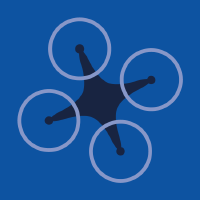Topic Editors

Machine Learning in Internet of Things II
Topic Information
Dear Colleagues,
Significant technological developments in the fields of machine learning and technology contribute to the expansion of the Internet of Things (IoT). The capabilities of knowledge extraction, data analysis, classification and inference are used in many systems. Research and implementation development allow us to expand the boundaries of machine learning applications. In the context of IoT, this will enable increasing the possibilities of automation, reasoning and decision-making based on the acquired data.
In recent years, there have also been other directions of development, such as digital twins and communication, which are very important. We dedicate this second edition to subsequent publications focused on intelligent solutions in the Internet of Things. Scientific research can focus on various applications in IoT, as well as on machine learning methods that are applicable to a broad range of smart materials.
Dr. Dawid Połap
Prof. Dr. Robertas Damaševičius
Topic Editors
Keywords
- 5G/6G
- artificial intelligence
- augmented reality or virtual reality
- bioinformatics
- biosensors
- biomarkers
- computational intelligence
- data augmentation, data fusion and data mining
- decision support systems and theory
- digital twins
- drone application
- edge computing
- explainable AI federated learning
- federated learning
- fuzzy logic/systems
- heuristic
- hybrid systems
- internet of things
- machine learning
- mobile applications
- smart solutions
- swarm intelligence
- transfer learning
Participating Journals
| Journal Name | Impact Factor | CiteScore | Launched Year | First Decision (median) | APC | |
|---|---|---|---|---|---|---|

AI
|
3.1 | 7.2 | 2020 | 18.9 Days | CHF 1600 | Submit |

Drones
|
4.4 | 5.6 | 2017 | 19.2 Days | CHF 2600 | Submit |

Electronics
|
2.6 | 5.3 | 2012 | 16.4 Days | CHF 2400 | Submit |

IoT
|
- | 8.5 | 2020 | 27.8 Days | CHF 1200 | Submit |

Machine Learning and Knowledge Extraction
|
4.0 | 6.3 | 2019 | 20.8 Days | CHF 1800 | Submit |

Sensors
|
3.4 | 7.3 | 2001 | 18.6 Days | CHF 2600 | Submit |

Preprints.org is a multidisciplinary platform offering a preprint service designed to facilitate the early sharing of your research. It supports and empowers your research journey from the very beginning.
MDPI Topics is collaborating with Preprints.org and has established a direct connection between MDPI journals and the platform. Authors are encouraged to take advantage of this opportunity by posting their preprints at Preprints.org prior to publication:
- Share your research immediately: disseminate your ideas prior to publication and establish priority for your work.
- Safeguard your intellectual contribution: Protect your ideas with a time-stamped preprint that serves as proof of your research timeline.
- Boost visibility and impact: Increase the reach and influence of your research by making it accessible to a global audience.
- Gain early feedback: Receive valuable input and insights from peers before submitting to a journal.
- Ensure broad indexing: Web of Science (Preprint Citation Index), Google Scholar, Crossref, SHARE, PrePubMed, Scilit and Europe PMC.
Related Topic
- Machine Learning in Internet of Things (15 articles)


